Long ago, an event known as the Byobu Matsuri ("Folding Screen Festival") was held each year in conjunction with Kyoto's famed Gion Matsuri, during which the wealthier residents of Kyoto would open their homes to the public to show off their valuable art collections. Today, in what is being billed as a modern-day re-enactment of that custom, nine Kyoto-area establishments are displaying works of art as part of the Nihonga Byobu Matsuri Exhibit.
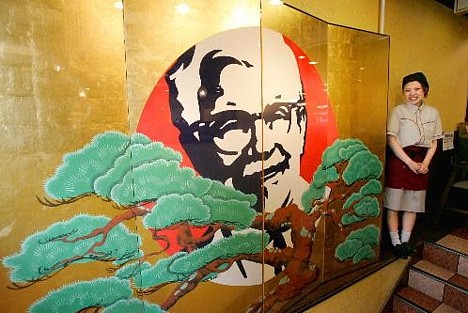
Among the participating hosts of the exhibit are two Kentucky Fried Chicken restaurants in Kyoto's Chukyo district, which are displaying folding screens and hanging scrolls by painter Taro Yamamoto, known for incorporating Western fast food iconography into nihonga (Japanese-style painting).
KFC's Shijo-gawara restaurant is displaying two of Yamamoto's works, including a gilded folding screen depicting the face of Colonel Sanders and the Japanese flag floating above a classic pine tree (pictured above).
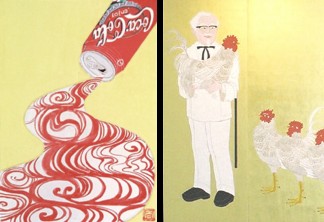 KFC's Shinkyogoku branch is displaying three of Yamamoto's works, including a gilded folding screen depicting Colonel Sanders holding an Ito Jakuchu-style chicken and a hanging scroll featuring a can of Coca-Cola.
KFC's Shinkyogoku branch is displaying three of Yamamoto's works, including a gilded folding screen depicting Colonel Sanders holding an Ito Jakuchu-style chicken and a hanging scroll featuring a can of Coca-Cola.
The Nihonga Byobu Matsuri Exhibit is being held from July 7 to 17.
[Source: Asahi Shimbun]

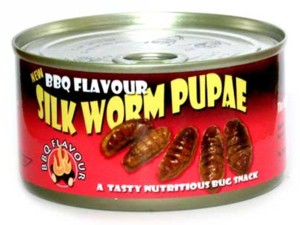 Japanese scientists researching the prospects of long-term human settlements on Mars are dreaming up ways to address the challenges of Martian agriculture. At a recent meeting of the
Japanese scientists researching the prospects of long-term human settlements on Mars are dreaming up ways to address the challenges of Martian agriculture. At a recent meeting of the  Final preparations are being made for the launch of a project to develop space yogurt. The plan is a follow-up to the
Final preparations are being made for the launch of a project to develop space yogurt. The plan is a follow-up to the 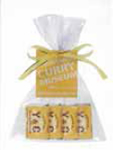
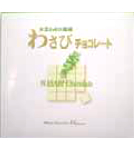
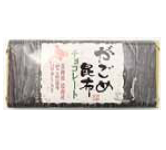
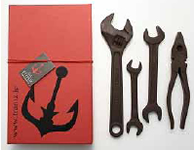
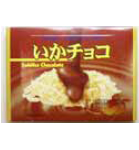

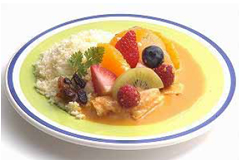 In conjunction with the exhibit, the Petit Vert cafe on the 8th floor is serving fruitcake that looks just like a plate of curry (1,200 yen) until March 31. Created by Nobuyuki Yamamoto, former head pastry chef at Hotel New Grand (Yokohama), this dessert is a museum original with local roots. The "rice" is made from chocolate and sponge cake, and the "curry roux" consists of a mixture of turmeric and orange juice.
In conjunction with the exhibit, the Petit Vert cafe on the 8th floor is serving fruitcake that looks just like a plate of curry (1,200 yen) until March 31. Created by Nobuyuki Yamamoto, former head pastry chef at Hotel New Grand (Yokohama), this dessert is a museum original with local roots. The "rice" is made from chocolate and sponge cake, and the "curry roux" consists of a mixture of turmeric and orange juice.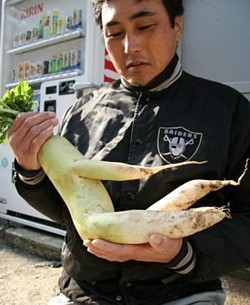 A daikon radish with a distinctly human shape is the talk of the town in Sasamicho, Wakayama prefecture.
A daikon radish with a distinctly human shape is the talk of the town in Sasamicho, Wakayama prefecture.